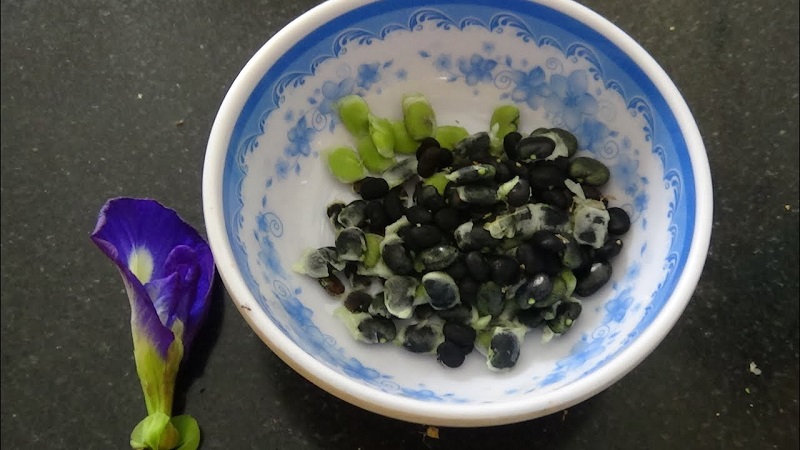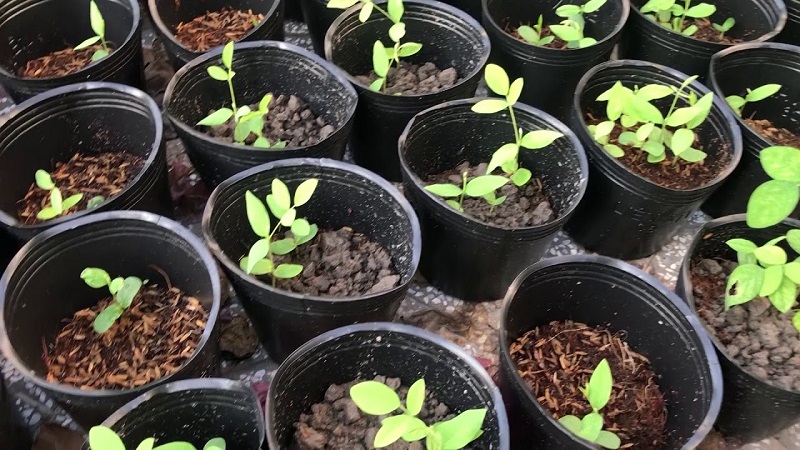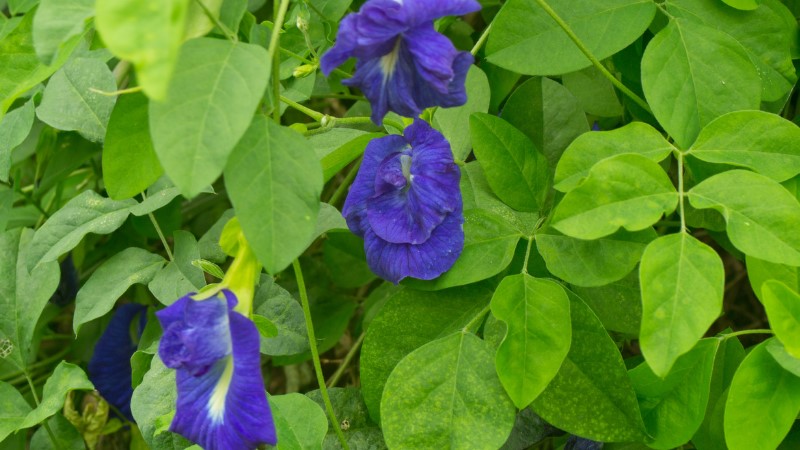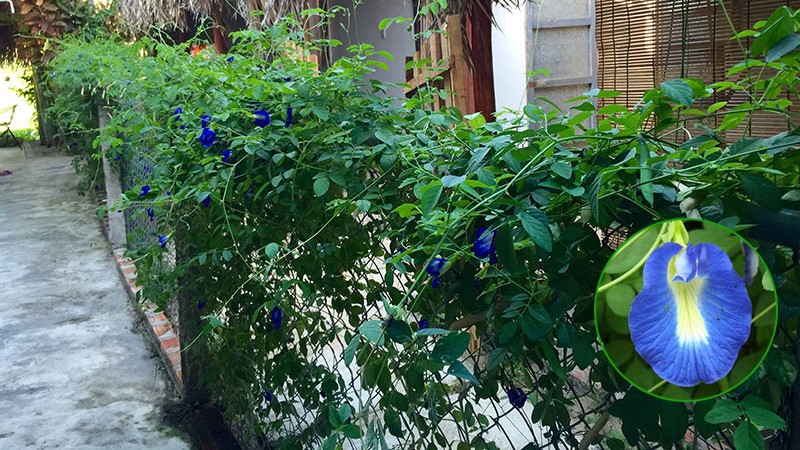Clitoria ternatea, or butterfly pea, is a wonderful ingredient with a multitude of health benefits. Now, you don’t need to buy dried butterfly pea flowers because we will show you how to grow your own at home for delicious teas and desserts!
1 What You’ll Need
- Clitoria ternatea seeds
- Potting soil
- Plastic pots with drainage holes (alternatively, you can use a seedling tray, planter box, etc.)
- Compost or aged manure
- Warm cloth
- Lime
 Gather your Clitoria ternatea seeds and a few other tools
Gather your Clitoria ternatea seeds and a few other tools
Note
Seeds
You can find Clitoria ternatea seeds at your local gardening store or online. Pay attention to the information on the packaging, especially the expiration date, to ensure the highest germination rate. Alternatively, you can collect seeds from the dried pods of healthy plants. Simply remove the seed coat, sun-dry the seeds, and follow the same germination process as you would with store-bought seeds.
Soil
Clitoria ternatea is adaptable and can grow in various types of soil. You can use soil from your garden or purchase nutrient-rich potting soil from a garden center. About two weeks before planting, sprinkle some lime on the soil to disinfect it and prevent plant diseases. This step is often overlooked, but it’s crucial for the plant’s healthy growth, even with the best climate conditions and care.
Compost or Aged Manure
You can purchase compost or aged manure from a garden center or nursery.
2 How to Grow Clitoria ternatea
Step 1 Prepare the Seeds
Mix warm water with a ratio of 2 parts boiling water to 3 parts cold water.
Soak the seeds in this mixture for 30 minutes.
Remove the seeds and wrap them in a warm, damp cloth overnight. This process helps crack the seed coat, encouraging faster germination.
Step 2 Plant the Seeds
Plant the seeds in your prepared soil.
Cover them with a thin layer of soil.
Water gently.
The planting site should be partially shaded.
Keep the soil moist by watering twice a day.
Care for the seedlings regularly until they reach a height of about 12-16 inches, at which point they can be transplanted.
 Steps to grow Clitoria ternatea
Steps to grow Clitoria ternatea
Step 3 Transplanting Clitoria ternatea
Create a small hole in the soil and place the seedling inside, gently firming the soil around the roots.
Tamp down the soil with your hands to secure the roots in place. If you have straw or leaves, you can spread them around the base of the plant to help retain moisture.
Water the plant. Within a few days, the Clitoria ternatea will develop new roots and begin to grow.
3 Caring for Your Clitoria ternatea
Watering
The amount of water your Clitoria ternatea needs depends on the weather and the climate in your region.
For optimal growth, maintain moist soil by watering twice a day, once in the early morning and once in the cool evening.
Note: Avoid watering during hot, sunny weather, and don’t overwater, as this can cause root rot.
When the plant is in bloom, avoid watering the flowers directly; instead, water the soil around the base of the plant.
 Caring for Clitoria ternatea
Caring for Clitoria ternatea
Fertilizing
To ensure year-round blooms, regular fertilization is essential. Here’s a suggested schedule for providing your Clitoria ternatea with the nutrients it needs:
After 20 days of planting, dilute some nitrogen-rich fertilizer with water and apply it twice a week.
After 45 days, use a balanced fertilizer with a ratio of 16:16:8 (NPK) or a combination of urea, superphosphate, and potassium sulfate.
One month after planting, apply the same balanced fertilizer again.
When the plant is in bloom, give it an extra boost of potassium by applying a potassium-rich fertilizer.
After each harvest, replenish the soil around the base of the plant with compost or aged manure to encourage continued growth and flowering for the next season.
Creating a Trellis and Pruning
As the plant begins to vine, provide a trellis or support for it to climb. You can get creative and use whatever suits your space and style, as long as the plant has something to cling to. You can even use the trellis to create a decorative feature or a shaded canopy.
Prune any dry, withered branches close to the ground to ensure the plant directs its energy towards healthy growth and flowering. Additionally, keep the area around the base of the plant free from weeds to prevent competition for nutrients.
 Creating a trellis for Clitoria ternatea
Creating a trellis for Clitoria ternatea
Pest and Disease Control
Clitoria ternatea is susceptible to aphids and leaf curl, which can impact its growth and flowering. Since we use various parts of the plant, including the flowers, roots, and stems, it’s essential to minimize the use of chemical pesticides.
Instead, opt for natural, homemade pest control sprays to protect your plant and ensure its safety for consumption.
Harvesting and Storing Clitoria ternatea Flowers
Harvest the flowers in the cool afternoon to avoid the morning dew, which can lengthen the drying process. Gently pluck the open blooms, being careful not to disturb the buds that are yet to open.
 Harvesting and storing Clitoria ternatea flowers
Harvesting and storing Clitoria ternatea flowers
After harvesting, dry the flowers in the sun and store them in an airtight container for future use. Avoid using containers that retain heat, as this can cause the flowers to lose their color and crumble.
Try using these beautiful blue flowers in recipes like butterfly pea flower tea, butterfly pea flower lemonade, butterfly pea flower rice, and more!
Now you know how to grow your own Clitoria ternatea at home. So, get planting and enjoy creating delicious and colorful treats!




































